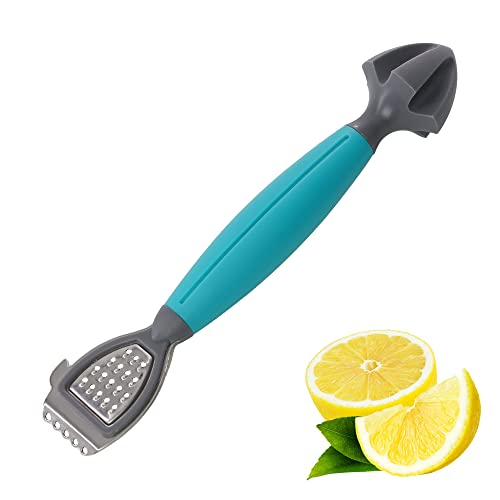Yes, you can zest a lemon with a grater
Lemon zest is a common ingredient used in cooking and baking to add a burst of flavor to dishes. While there are specific tools designed for zesting lemons, such as a zester or microplane, a grater can also be used to achieve the same result. In fact, a grater is a versatile kitchen tool that can be used for a variety of applications, including zesting citrus fruits like lemons.
Why use a grater to zest a lemon?
Using a grater to zest a lemon can be a convenient option for several reasons. Firstly, most kitchens already have a grater on hand, making it easily accessible. Secondly, a grater can produce a fine zest with minimal effort. Lastly, the small and sharp holes on a grater are perfect for removing the flavorful outer layer of the lemon peel, while leaving behind the bitter white pith.
How to zest a lemon with a grater
Here is a step-by-step guide on how to zest a lemon with a grater:
- Choose a lemon that is firm and has smooth skin. Wash the lemon thoroughly to remove any dirt or pesticides.
- Hold the grater firmly in one hand and the lemon in the other, ensuring a secure grip on both.
- Position the grater at a slight angle against the lemon, with the smaller holes facing down. Gently press the lemon against the grater and move it back and forth in a smooth, steady motion.
- Continue grating the lemon until you have obtained the desired amount of zest. Be careful not to grate too deeply, as this may remove the bitter pith.
- Once you have finished zesting the lemon, carefully remove the zest from the grater and use it as desired in your recipe.
Tips for using a grater to zest a lemon
Here are some tips to ensure the best results when using a grater to zest a lemon:
- Use light pressure when grating the lemon to avoid removing the white pith, which can add a bitter taste to your dishes.
- If the grater becomes clogged with zest, gently tap it against a bowl or the edge of your work surface to remove the build-up.
- Rotate the lemon as you grate to ensure an even extraction of zest.
- If you prefer a stronger lemon flavor, you can grate more deeply into the lemon, but be aware that this may result in a slightly bitter taste.
- For a finer zest, you can use the smaller holes on your grater or use a microplane instead.
Alternative tools for zesting lemons
While a grater can be an effective tool for zesting lemons, there are also other options available:
- A zester: This tool is specifically designed for zesting citrus fruits and features long, slender blades that easily remove the outer layer of zest without removing the pith.
- A microplane: Similar to a grater, a microplane has small and sharp holes that can produce fine, delicate zest. It is a popular choice among professional chefs and home cooks for zesting lemons and other citrus fruits.
- A vegetable peeler: Although not as precise as a grater, using a vegetable peeler to remove long strips of lemon peel can also be an option for obtaining zest.






